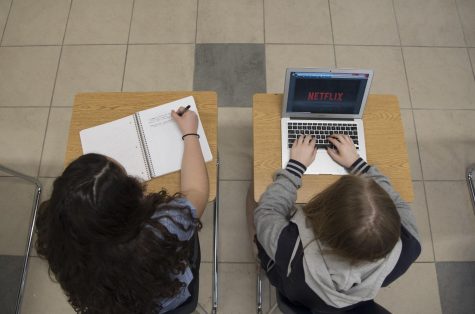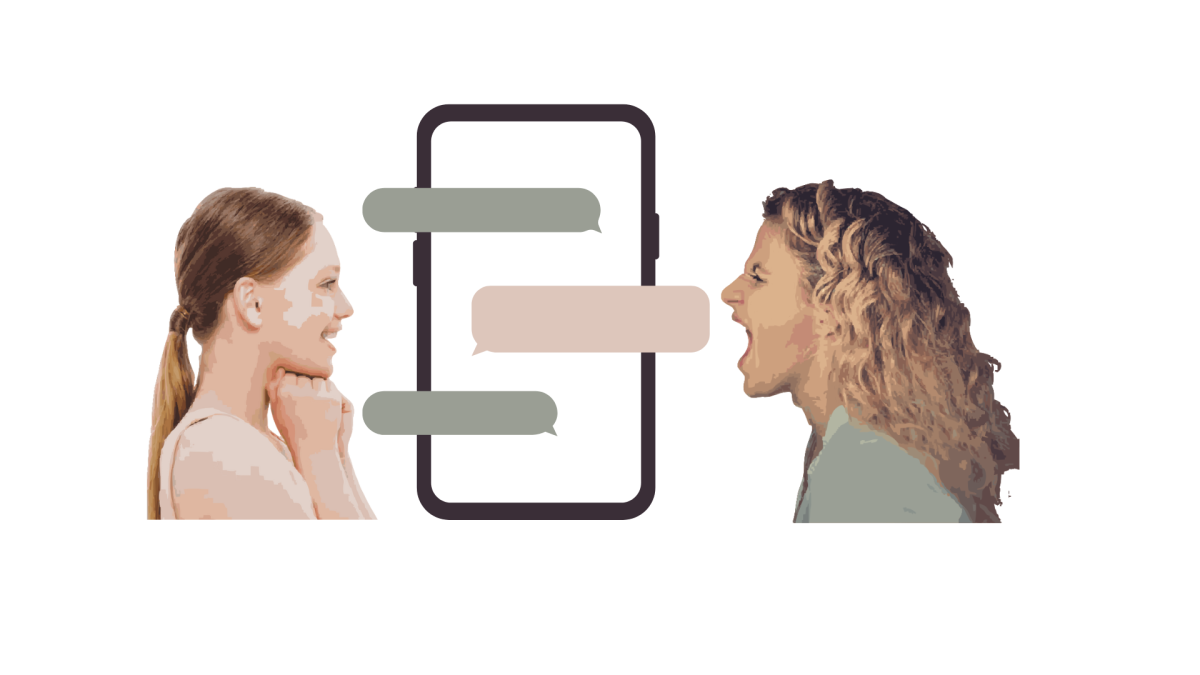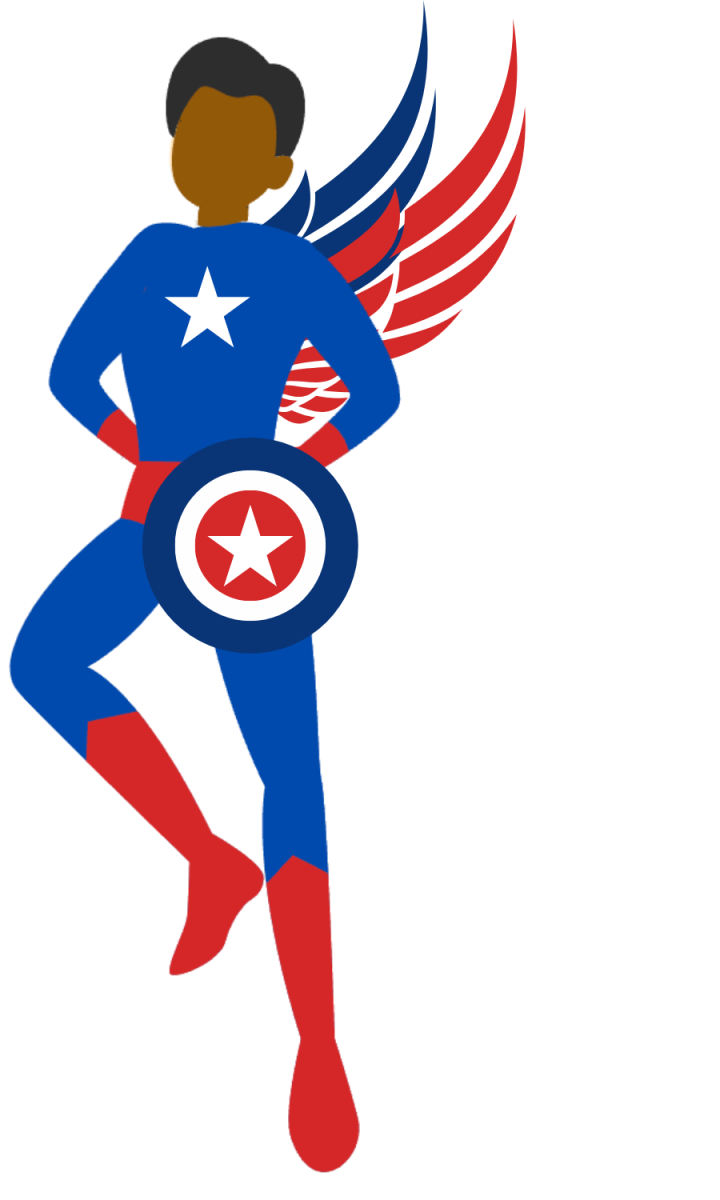The scene is a familiar one: a teacher dictates to a class of students in the midst of typing down notes. The clicks of excited typing fill the room, and the collective glow created by the collection of screens brightens what would be an otherwise dark room, whose lights are turned off to better allow the pupils to read a PowerPoint and type the material.
At least, most of them are. If 80% of the class members are responsibly recording the report, the other 20% are in the midst of more important activities. The most commendable among these persons are catching up on their homework. Others are reading a forum, and one person is reaping the deals of Cyber Monday.
Teachers permit and encourage us to use our devices to do homework, create presentations and take notes in class. Yet sometimes, this doesn’t happen. Although students in classes like Science Department Chair Max Meyer’s AP Biology or Social Studies
Teacher Sonia Sullivan Clifton’s Honors Psychology course generally organize all their information digitally on Google Docs, some like Social Science Teacher Brian Brown prefer their students to continue to use pen and paper.
“When I began to teach in Maryland in 2004, computers were not as ubiquitous as they presently are,” Brown said. “Later in 2014, I was teaching at an institution where every student was encouraged to incorporate a personal electronic device in class. Before that, the use of those types of electronics was rare and only incorporated if the student required it due to medical or learning-based difficulties.”
This usage of personal devices caused personal involvement in class to fall. Phones were the biggest problem,” Brown said. “Lots of my students would try to seem invested in recording the material on the board, but it was obvious they were not, most likely on social media or texting. Tell-tale signs of students with laptops not acting as they should were the positions of the hands on the computer. Those with their fingers too close to the trackpad and who weren’t typing a lot were always a suspect, and I could tell who the gamers were by placement of their hands on the arrow keys.”
Not only do these actions lower the attention of the individual, but they also distract others from being able to focus on the lesson.
“When a student was online doing something they shouldn’t, everyone behind them and around them were also dragged in,” Brown said. “It’s one thing when the student you know doesn’t try is goofing off, but another thing entirely when the ones behaving well are corrupted. Because of this, I eventually barred digital notes from my class.”
This adverse spread of distraction has been well-documented. A 2012 study conducted by researchers from York and McMaster Universities on the helpfulness of multitasking required participants use their computers to search articles unrelated to the lecture at hand. As anyone could predict, the students remembered less than those who were invested. For those adjacent, “comprehension was impaired [suggesting] that despite actively trying to learn the material (as evidenced by comprehensive notes, similar in quality to those with a clear view of the lecture), these participants were placed at a disadvantage by the choices of their peers.”
One other history teacher who first used computers then forbade them is Social Science Teacher William Milsten.
“When the school switched to the one-to-one system five or six years ago, I noticed engagement in my class drop nearly instantly,” Milsten said. “I started walking around, taking censuses of the other classrooms, and I would find a third of the students with a computer not listening, either playing games (especially the boys) or shopping. Once I stopped allowing laptops, engagement rose as quickly as it fell.”
This subject interested Milsten so much that he began to do outside research.
“Colleges ran into this dilemma even earlier than we did in secondary schools. The professors were facing a wall of laptop screens, but the students were disengaged. They began researching the differences between note-taking by hand and note-taking digitally, and found that their hunches were correct.”
One notable example of research conducted was by Patricia A. Alexander and Lauren M. Singer. Since 1992, they had done research on the benefits of hand-written notes. This culminated in a series of three studies which showed that although some participants believed their comprehension of material was better when they read online notes and typed the material, those who had read printed material and wrote notes by hand better remembered the details of the information that they were learning and studying.
While handwritten notes show signs of their supperiority, it can be hard to copy all of the information in some classes. One way Mathematics Teacher Elisabeth Wehr bypasses this is by providing a rigid note-outline which forces adherence to the material but makes it easy to copy.
“Because the concepts explored in math textbooks are sometimes so complex, they don’t quite read well if they are described in written English,” Wehr said. “And unlike history or English, which are nearly exclusively letter-based, math uses a lot of Greek symbols, like pi. While these can be easily copied by hand, they’re a chore to insert on the computer.”
It would seem then that computers are not required for recording notes, and they make recording information more difficult and studying less effective.
So what benefit do computers provide?
“I want to clarify, I am not against new technologies,” Milsten said. “When I was a student and had to work with my peers on a project, we had to organize the event over the phone, and the disconnect imparted by this made working hard. Today, students have Google Docs and other collaborative apps online, a much better system. Electronics have also made visual models easier to create, like graphs or presentations. I feel computers are very useful outside of the classroom, just not inside it.”















